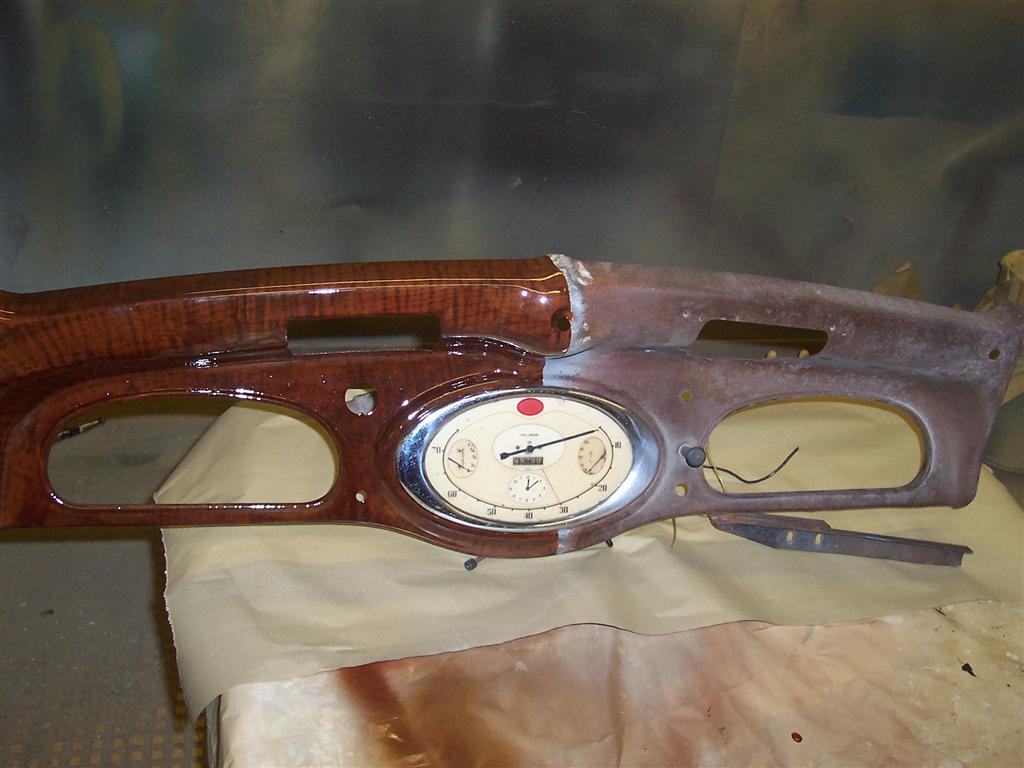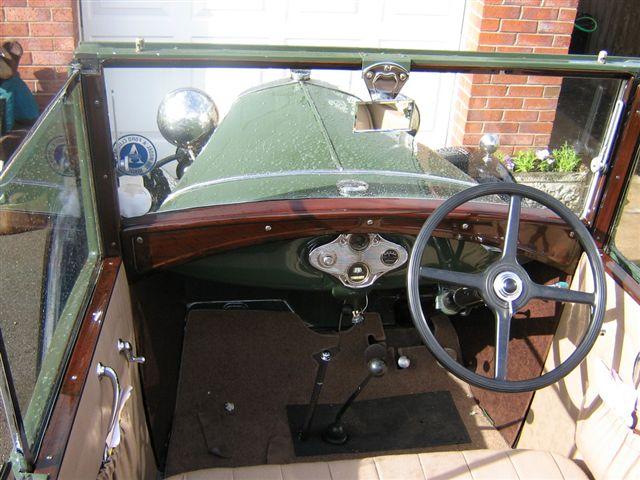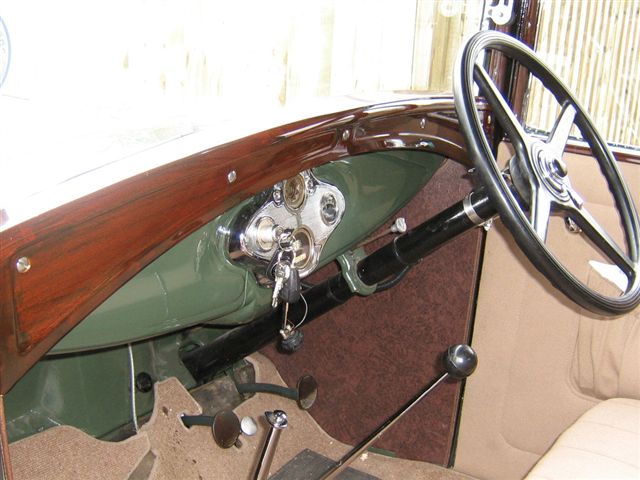 |
|
||
|
The photo shows the dash from a 1930s Hillman Minx half done |
Faux inner window frame section on top of a mahogany table | ||
 |
 |
||
| Example of faux woodwork by Barry Smith for Jon Davidson; chairman of the Model A Ford Club of Great Britain | |||
What is Faux Woodwork?
A lot of cars in the early part of the twentieth century were produced with what at first sight appeared to be a wooden dashboard and interior trim
A closer inspection and touch, proved this trim to be metal not wood. The effect was obtained by a specialist process which faithfully duplicated a real wood effect
By the early thirties almost seventy different companies were using this specialist method to reproduce wood graining in their cars
The process incorporates sandblasting the area being treated, applying a layer of basecoat, a layer of colour and, using graining compound and tracing plates, hand painting each individual wood grain style: It is a lengthy process, locking the wood grain between the layer of colour and a topcoat of clear lacquer. But the effect is amazing. And what’s more, it is achieved by using the original factory process that was used on these cars in the early nineteen hundreds, to restore the authentic wood grain to the vehicle interior trim
At Barry Smith Cars, we are using professional tools, equipment and expertise, to bring this age old wood graining tradition to your vehicle
Many of our customers or visitors to our workshops are amazed that what they see before them is not ‘wood’ - indeed, even some wood specialists think it is wood! That tells you how realistic the wood graining effect can be in your car
Although the process is intricate and timely, it is not prohibitively expensive. Most of our clients are genuinely surprised at how inexpensive such a process can be and how amazing the effect it will have on the interior of their car
If you own a vintage car which could benefit from this lost art, give Barry a call
Faux Woodwork - using the original factory process to restore the ’wood grain’ in your car!
 |
|
||
|
The photo shows the dash from a 1930s Hillman Minx half done |
Faux inner window frame section on top of a mahogany table | ||
 |
 |
||
| Example of faux woodwork by Barry Smith for Jon Davidson; chairman of the Model A Ford Club of Great Britain | |||